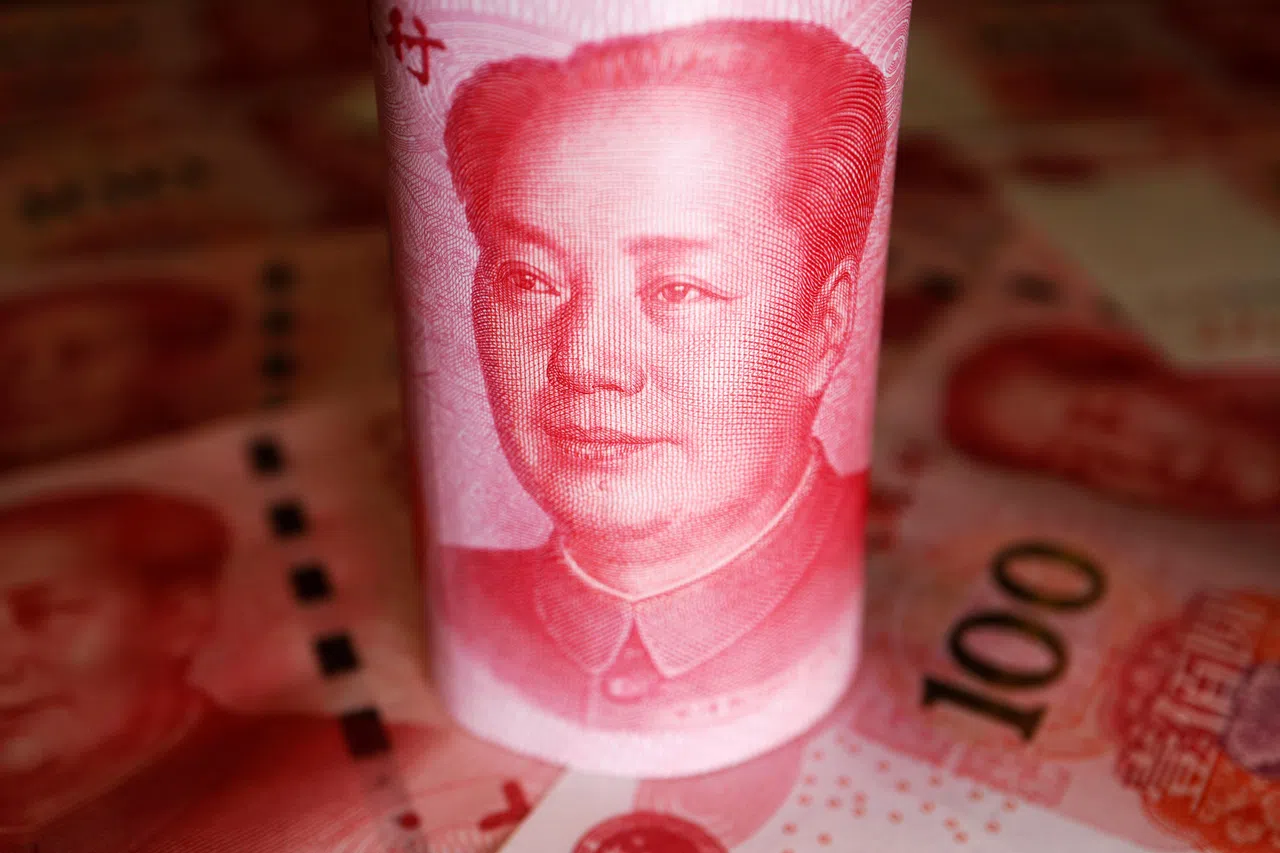[ad_1]
CHINA signalled continued support for its currency as broad strength in the US dollar kept the yuan close to a policy no-go area.
The People’s Bank of China set its daily reference rate for the managed currency at 7.0968 per US dollar, within its recent range, after the offshore yuan weakened by the most in three weeks overnight. China sets the so-called fixing at 9:15 am local time, around which the currency is then permitted to trade in a 2 per cent range.
The gap between the so-called fixing and forecasts was the widest on record since Bloomberg started its daily survey in 2018.
“The strong fix simply underscores policymakers’ desire and will to pursue RMB stability,” said Christopher Wong, an FX strategist at OCBC. “Clearly, the fix is outside of consensus estimates but the strong fix shows that policymakers want to send a strong message to markets.”
China watchers have been eyeing the daily reference rate for signs of where Beijing wants to guide the currency after it weakened to within a whisker of the edge of its trading range. Officials have been vigilant of yuan pressure which can spill over to local stocks and bonds, despite the fact that the country’s exporters would benefit from a weaker currency.
The offshore yuan closed at about a two-week low on Wednesday (Apr 10), after a fresh round of hot US inflation bolstered the greenback and Treasury yields. Derivatives markets are now signalling the Federal Reserve will cut interest rates just twice this year, starting in September. In contrast, China’s consumer price growth in March trailed forecasts, underscoring deflationary pressure there.
GET BT IN YOUR INBOX DAILY

Start and end each day with the latest news stories and analyses delivered straight to your inbox.
Rapid yuan drops can lead to a vicious cycle of capital outflows and further losses, so Beijing often prizes stability. As a source of stability in the global FX market and an anchor for its regional peers, an increase in yuan volatility risks spilling over into other currencies, even the US dollar.
“This sub-7.10 fix post US-CPI certainly sends a strong signal that PBOC is not willing to relinquish control on the yuan at all,” said Fiona Lim, a senior currency strategist at Malayan Banking Berhad in Singapore. “That could keep dollar-yuan gains in check for the near-term but the yuan could look increasingly overvalued if this sustains.”
The PBOC pushback with the fixing was coupled with dollar sales by state-owned banks to support the yuan in the morning, according to traders. Chinese lenders’ offshore units also helped tighten offshore liquidity, a move that will squeeze yuan shorts.
The onshore yuan was little changed around the 7.2360 per US dollar level, not far off its weakest since November and inches away from the edge of its fixed trading range. The fix was set at 7.0968 per US dollar.
Twelve-month forward points on the currency dropped to lowest since 2008, a sign that policy divergence with the US is making yuan borrowing costs cheaper relative to the US dollar’s.
Worsening inflation metrics and renewed currency weakness is adding to the dilemma for the PBOC as it is tasked with keeping both borrowing costs low and capital outflows contained. The central bank has kept its key rate steady for about seven months and a Bloomberg survey on next week’s liquidity operation points to it standing pat once more.
The Chinese economy would benefit from further rate cuts given that inflation remains well below target, but the need for currency stability may limit room in the near term, wrote Lynn Song, chief greater China economist at ING, in a note.
”We do not expect a rate cut to come until the second half of the year,” he said. BLOOMBERG
[ad_2]
Source link




